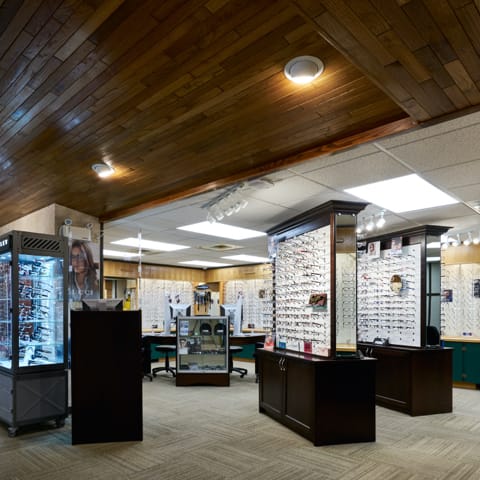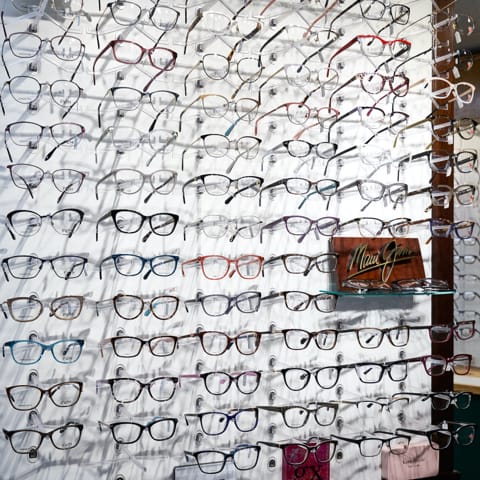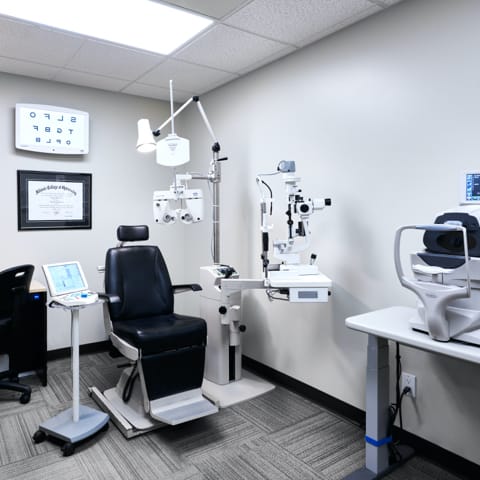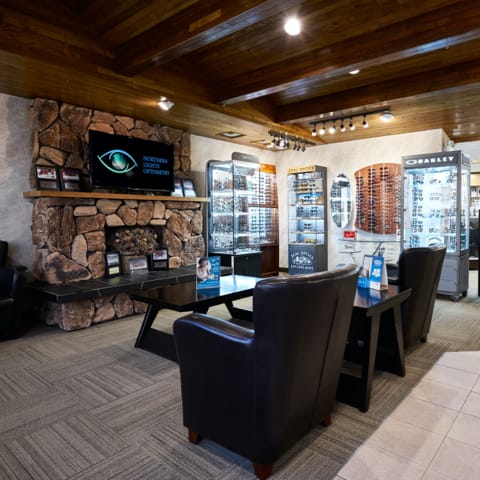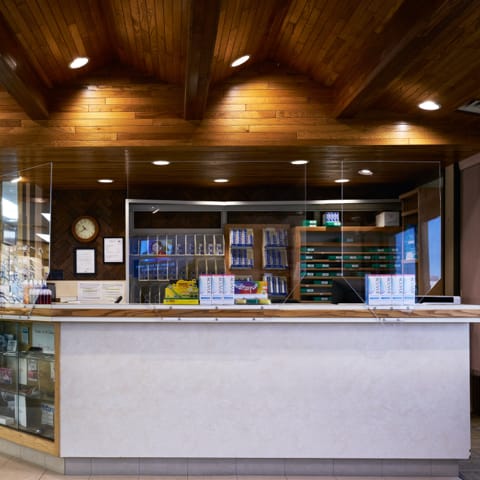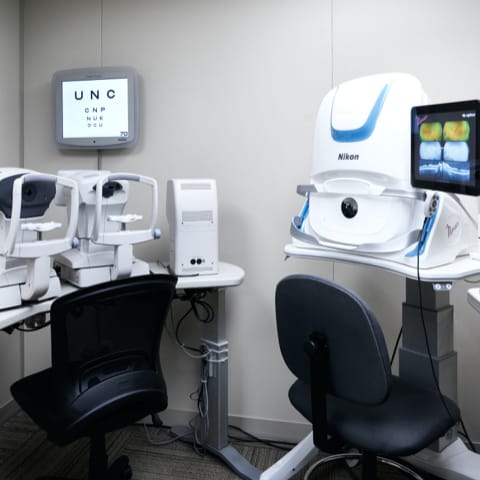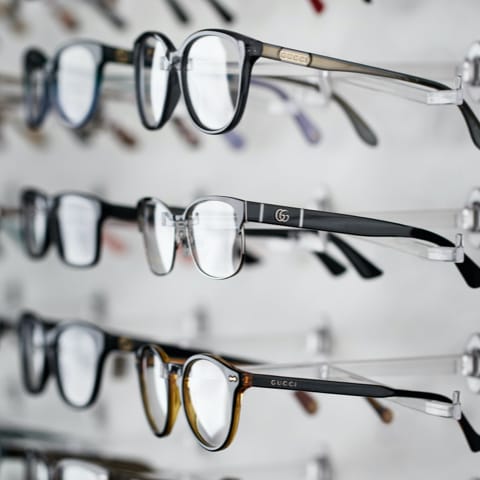Dry Eye Solutions Built for Life in Yukon
Whether you’re taking advantage of the outdoor paradise we call home, spending time with your family, or getting work done, you rely on comfortable vision to make every day great. If you are one of the many people who are experiencing some of the many symptoms of dry eyes such as stinging, burning, grittiness, over-tearing, then consider booking an appointment with one of our optometrists so we can assess your dry eye symptoms and create a treatment plan to help find you relief.
Dry Eye Symptoms
Dry eyes may be an annoyance or a distraction in your daily life, but they can also increase your risk of eye infections or even damage your cornea.
We invite you to come see us if you’re experiencing the following symptoms of dry eye disease:
- Stinging or burning eyes
- Eye redness
- Grittiness or the sensation of having something in your eye
- Tired eyes
- Blurred vision, including after working at a computer
- Watery eyes or excessive tears
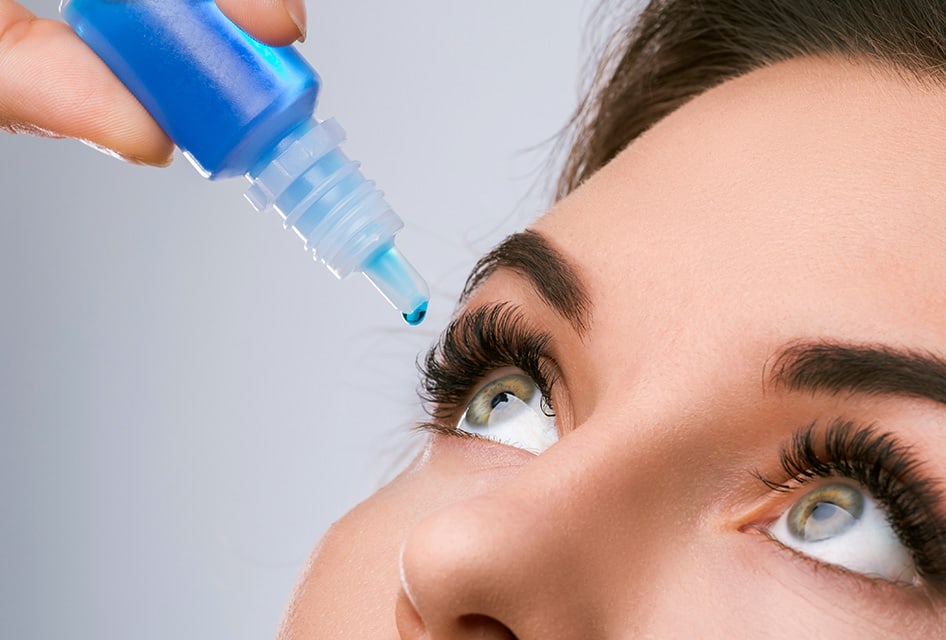
What Causes Dry Eyes?
Generally speaking, dry eyes happen when you don’t have enough tears or when your tears evaporate too quickly to keep your eyes properly hydrated.
Dry or smoky air, windy conditions, or having a fan blowing on your face can make dry eye symptoms worse, as can working at a computer. Dry eyes can also result from natural changes to your eye’s lubrication as part of the aging process or due to hormonal changes.
Dry eyes can be a side effect of medication, including antihistamines, decongestants, antidepressants, and drugs for high blood pressure, acne, and birth control. Your tear production can also be affected by an autoimmune disease.
It’s not always simple to identify the root cause of dry eyes, so a comprehensive eye exam is an important first step in creating a custom treatment plan.
Meibomian Gland Dysfunction (MGD)
Meibomian gland dysfunction (MGD) is the most common cause of dry eye disease. It’s a result of tiny oil glands in your eyelids, called meibomian glands, not working correctly.
The most common type of MGD involves the glands being clogged, which means your eyes don’t get enough of the oil required for good-quality tears.
If we assess that MGD is causing your dry eye symptoms, we can provide in-office and at-home treatment to help unclog the glands and restore the quality of your tears.
Blepharitis
In some people, dry eye symptoms are caused by blepharitis, which is eyelid inflammation caused by either bacteria or a skin condition such as rosacea or dandruff.
Blepharitis can often be helped by keeping the eyelid area clean and free from crusts. You can clean the area and clear crusts by washing with special cleansers or using lid wipes, and by using a gentle warm washcloth compress.
Treatment Options for Dry Eye Disease
After your eye exam, we will recommend a treatment plan to help relieve your dry eye symptoms. This might include one or more approaches based on the likely root causes of your dry eyes.
Eye Drops
Over-the-counter eye drops can be a good source of relief for mild dry eye symptoms. We carry a range of Systane products, both in multi-use bottles and in single-use, preservative-free options, for daytime and overnight use.
We may also prescribe medicated eye drops or ointments to treat chronic inflammation.
Warm Eye Compress
A warm eye compress can provide comforting, temporary relief from dry eye symptoms.
If your dry eyes are caused by meibomian gland dysfunction, a warm compress may improve the quality of your tears. And for those with crusty eyelids due to blepharitis, a warm compress can help release the crusts.
You can make an eye compress at home simply by running a clean face cloth under warm (not too hot) water, squeezing out the excess water, folding it up, and placing it on your eyes until it cools. Repeat as needed.
Lid Wipes
Lid wipes can help clean your eyelids and free them from irritants that contribute to uncomfortable dry eyes.
We sell convenient Systane Lid Wipes to support your lid hygiene routine.
Meibomian Gland Expression
If your dry eyes are a result of clogged meibomian glands, we can express the glands in-office to release them with the goal of improving the quality of your tears.
We may use an anesthetic eye drop to keep you more comfortable during this short procedure. First, we apply a warm compress to your eye area for several minutes to help soften the meibum. We then use a small paddle or cotton-tip applicator to apply pressure along each eye lid to release the meibum.
After your procedure, we’ll share some tips to help the results last longer.
Punctal Plugs
Punctal plugs are tiny devices inserted into the corner of your eyes to stop tears from draining too quickly. They can help relieve your dry eye symptoms by keeping your tears on the surface of your eye for longer.
If we determine that other treatments aren’t relieving your symptoms, we may recommend punctal plugs. We can insert these in our office in a procedure that takes only a few minutes and you can get back to your day right away.
Omega-3 Supplements
Omega-3 fatty acids have been shown in studies to help soothe dry eyes. You can get omega-3s as part of your diet by regularly eating fish such as salmon, sardines, herring, and tuna.
We also recommend omega-3 supplements to our patients dealing with dry eyes for extra relief from their symptoms.
Visit Us In Whitehorse

Our Address
- 2093 2nd Avenue
-
Whitehorse,
YT
Y1A 1B5
Our Contacts
- Phone: 867-668-2020
- Fax: 867-667-6526
- Email: eyes@northernlightsoptometry.ca
Find us in downtown Whitehorse across from the Yukon Visitor Information Centre, just steps from Main Street and the Yukon River.
For your convenience, we are wheelchair accessible.
Hours of Operation
- Monday: 8:00 AM – 5:00 PM
- Tuesday: 8:00 AM – 5:00 PM
- Wednesday: 8:00 AM – 5:00 PM
- Thursday: 8:00 AM – 5:00 PM
- Friday: 8:00 AM – 5:00 PM
- Saturday: Closed
- Sunday: Closed
Hours of operation may vary on holidays.

Our Brands




Our Testimonials
We’ve been going to Northern Lights Optometry for 20 years. The service has been always first class. The staff are professional, courteous and knowledgeable about the products they sell. This all lead by Dr. Gorrell who is the consummate professional, always gives professional no BS advice and is always friendly. He is fantastic with kids and helped my son make the transition from glasses to contacts when he was 9. 6 stars for me!!
Marcel B.
Friendly staff and expert advice. We are very fortunate to have this level of service and selection in Whitehorse. They went above and beyond to help me out in a jam! Thanks for the great service and quality care!
Jordan S
Northern Lights Optometry has taken care of my ocular health for the past 30 years. I’ve never had anything but good experiences. Pleasant, knowledgeable staff and kind, professional service are the standard.
Sarah H.
Always a great, professional, and knowledgeable experience for myself and my family, whether it’s a regular eye exam or a diabetic exam. I’ve been a patient at Northern Lights for over 25 years, and I’ve always received the quality customer service I’ve come to expect because that’s what I’ve always received. Great selection of glasses and sunglasses at competitive pricing. I highlight recommend Dr. Gorrell and his staff.
Jill N.
Had been having headaches and fatigue for months when it was suggested I have my eyes checked. Has not had my eyes checked in ten years. I was referred to see Dr. Guy Gorrell by a good friend. Dr. Gorrell was professional and very thorough in his assessment of my eyes and overall vision. In the end Dr. Gorrell was able to diagnose that my eyes did in fact need a prescription lens and my headaches and fatigue were likely due to my straining my eyes to see properly. His friendly and helpful staff assisted me in choosing my frames and in a very short period of time my glasses were available. Since having the prescription glasses my headaches and fatigue have stopped and I am very pleased. I highly recommend Dr. Gorrell and his staff at Northern Lights Optometry.








